What is the difference between Profibus and Profinet? Profibus and Profinet are industrial communications protocols used extensively by Siemens control systems. While they may sound similar, don’t let the names fool you!
Profibus and Profinet are very different protocols that use different cables and connectors. Let’s take a look at Profinet vs Profibus and learn how they differ from one another.
Released in 1993, Profibus, or “ PROcess-FIeld-BUS,” is a tried and true industrial communication protocol.
With over 50 million devices installed by the end of 2017, it is a well established technology used in many different control applications.
A Profibus connection port may look very familiar to you; It looks just like a standard DB-9 serial connector. While it may look the same, the underlying protocol is very different.
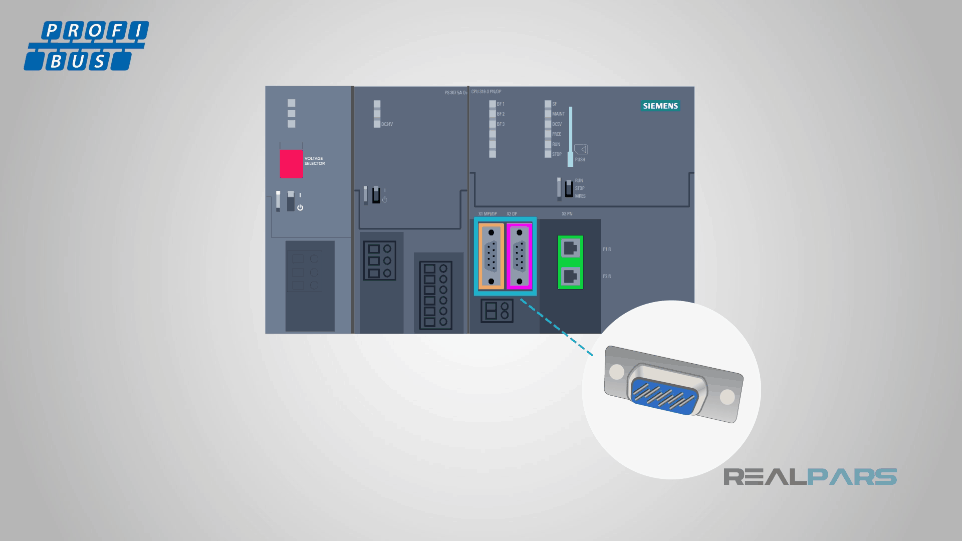
Most Profibus cable looks like what you see in the image below. It is easily recognizable by its purple outer jacket.

Some Profibus connectors have a pass-through port on the back of the connector so that you can daisy chain another device to the bus.
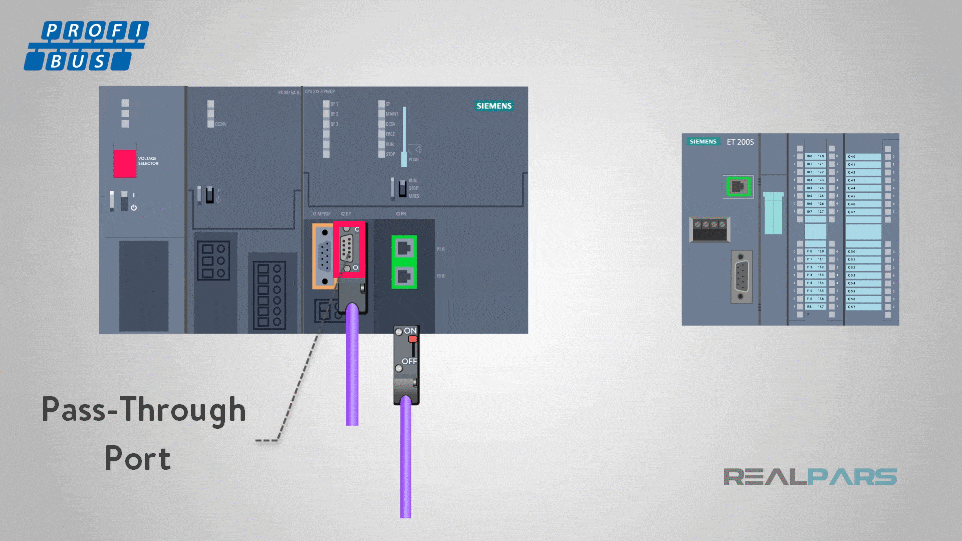
Note that both kinds of connectors have a red switch on the back. This switch controls the Terminating Resistor. The terminating resistor indicates the end of the Profibus network.
This switch must be set to the “on” position on the last device and “off” for every other device. If these switches are set incorrectly, a bus fault will occur.
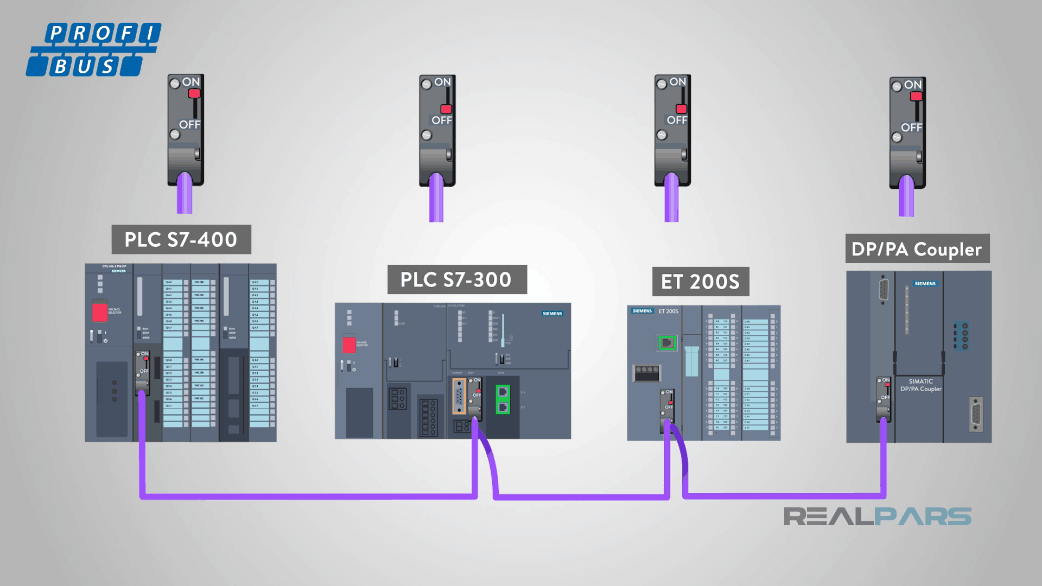
Each device on a Profibus network must have a unique address, ranging from 1 to 127. This means that up to 127 devices may reside on a single Profibus network.
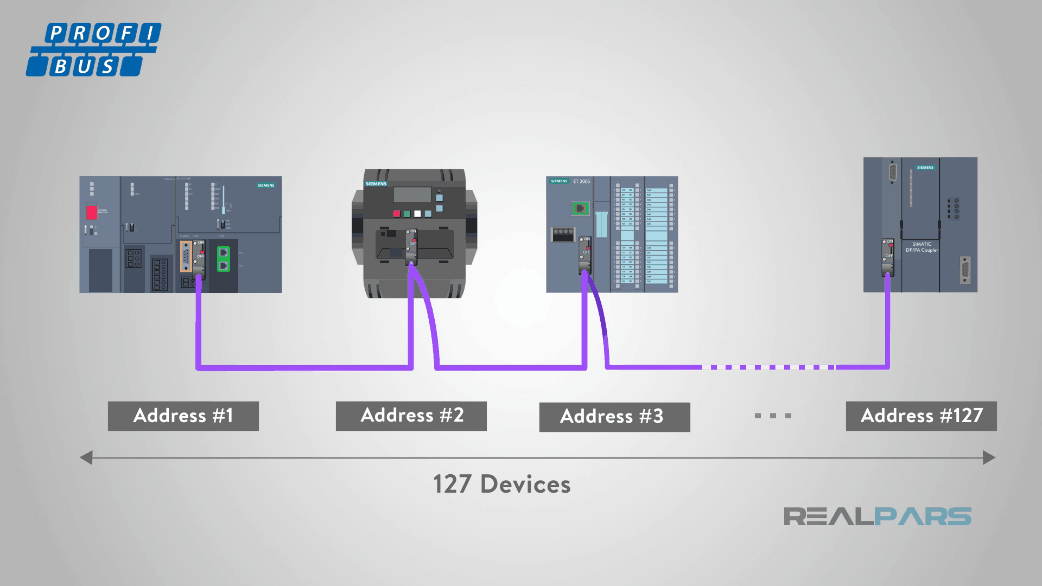
For some devices, the address will be set using STEP7 or TIA Portal. For others, the address must be configured using dip switches located on the front of the device.
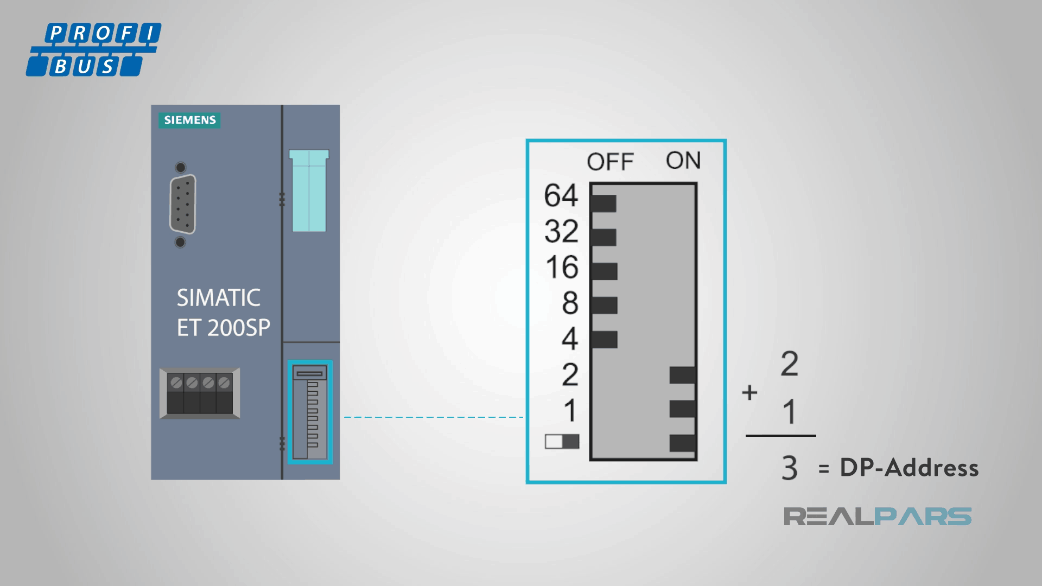
Profibus networks operate at speeds of 9600 bits per second to 12 megabits per second. While Profibus cables may be up to 1000 meters long, shorter cable lengths are required for higher data rates.
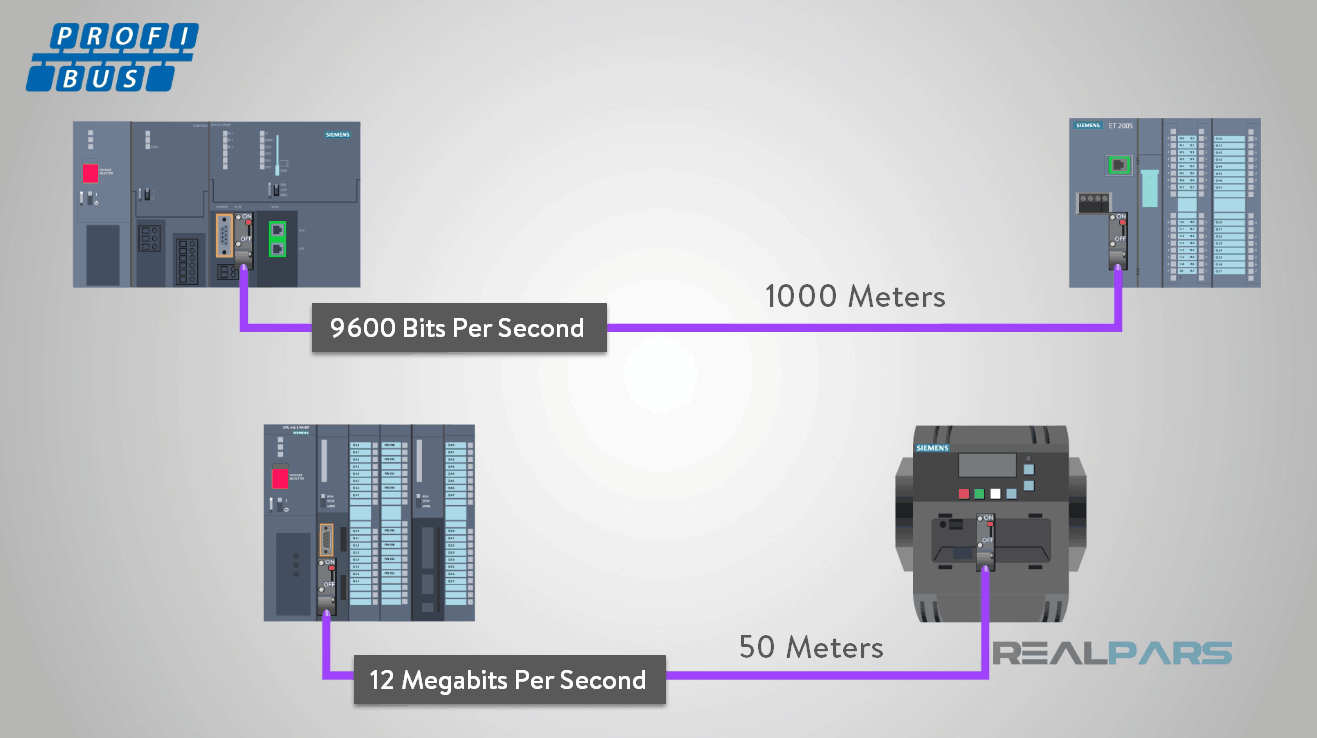
Profinet is a newer, Ethernet-based industrial communications protocol. The physical interface used for Profinet is a standard RJ-45 Ethernet jack.
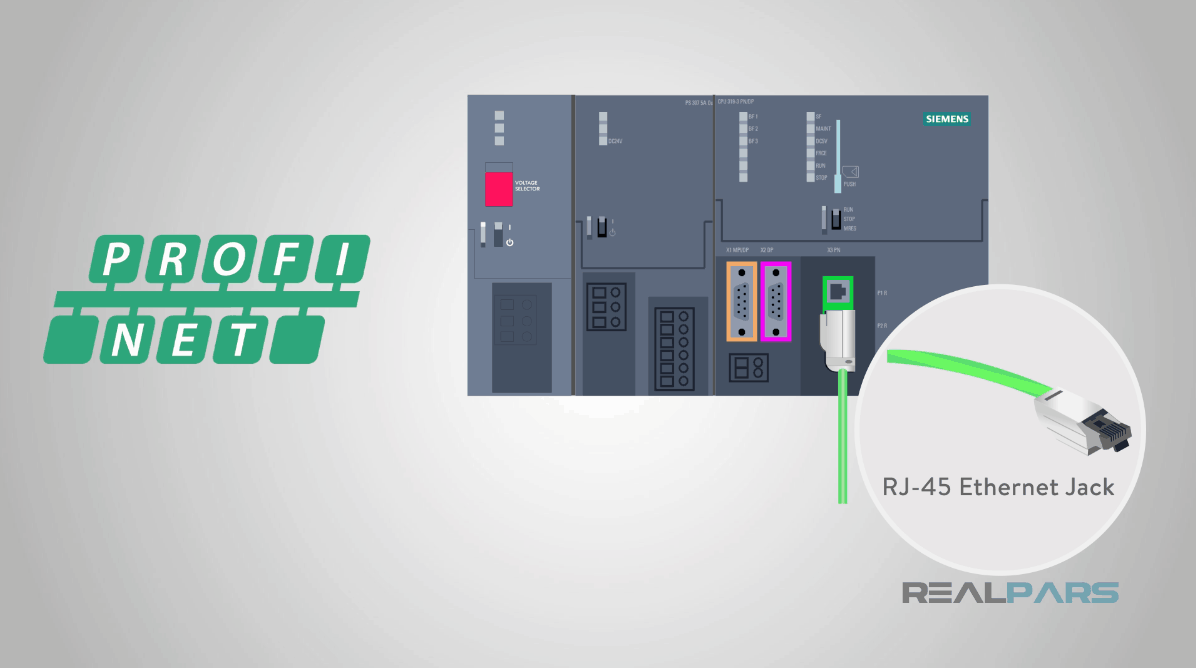
Profinet cables are easily recognizable by their green color. While in some cases a standard Ethernet cable may be used to connect two Profinet devices, official Profinet cables should be used as they contain robust shielding and are designed to function well in harsh industrial environments.
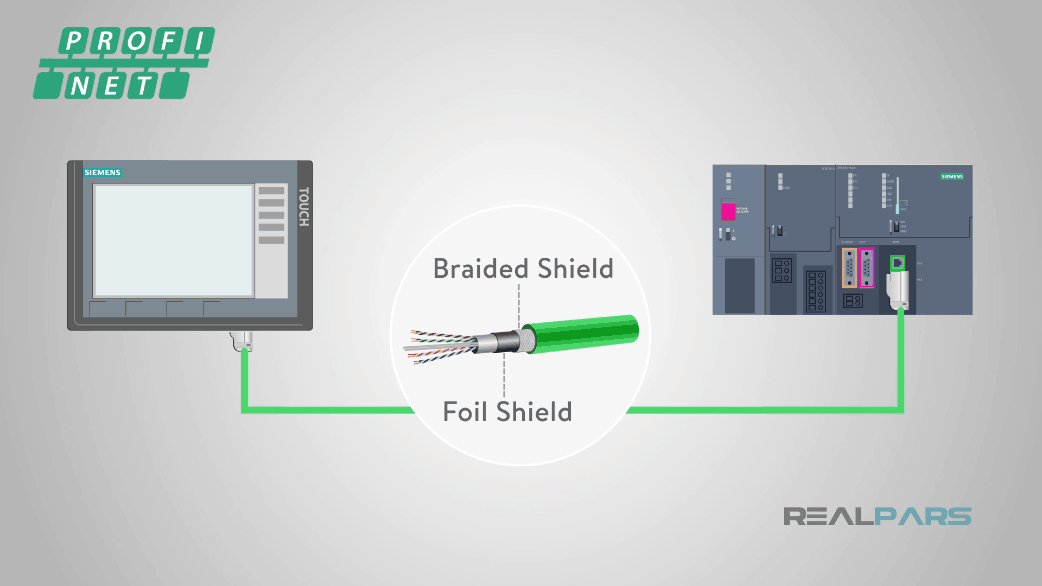
Profinet operates at 100 megabits per second, and cables may be up to 100 meters in length.
Due to its high-speed operation and a response time of less than 1 millisecond, Profinet is ideal for high-speed applications.
Because Profinet uses the same physical connection standards as Ethernet, standard Ethernet switches can be used to expand your network.

Profinet devices have three different types of addresses:
1) IP address
2) MAC address
3) Device name
All Ethernet devices use IP addresses and MAC addresses, but the device name is unique to Profinet devices.
As an automation engineer, you will be primarily concerned with Device Names and IP addresses as you configure your Profinet networks.

Due to its higher speed and greater flexibility, Profinet is becoming the preferred communications protocol for industrial application.
Both protocols are widely used today, and being familiar with both of them will be essential to your job as a controls engineer.
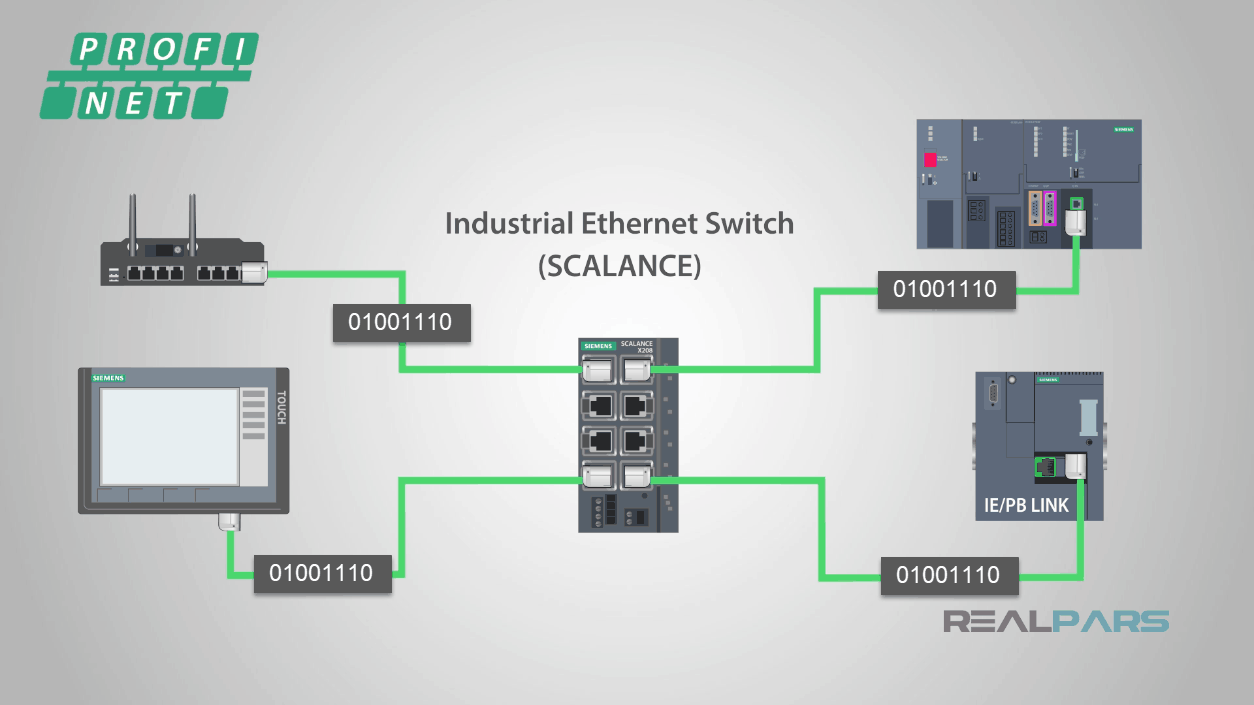
What’s the biggest “aha” you’re taking away from this technical conversation? How can you put that insight into action now? Tell us the comments below.
Thanks again for reading about Profibus vs Profinet. Leave your questions and comments and we’ll chat with you soon!
Happy learning,
The RealPars Team

